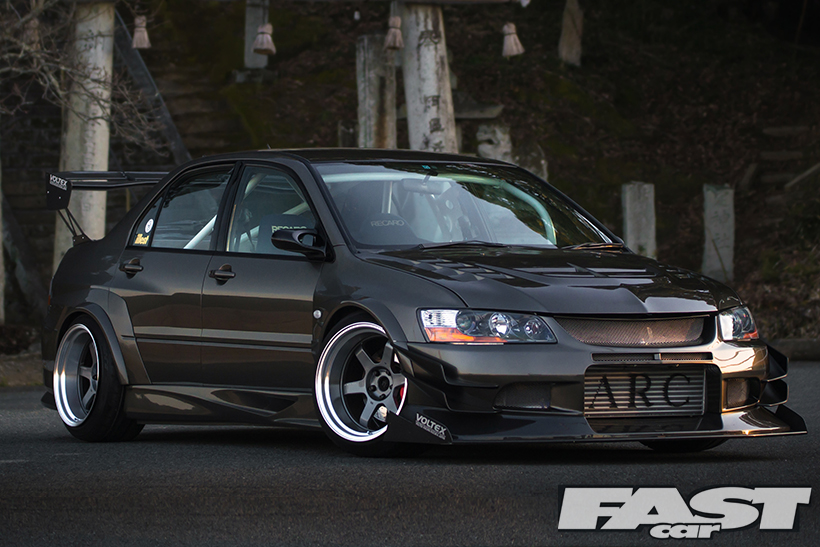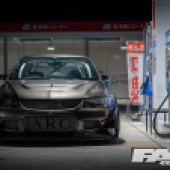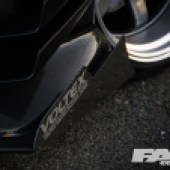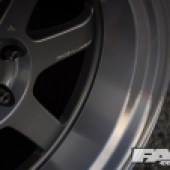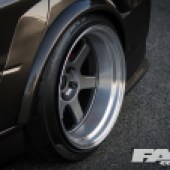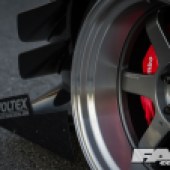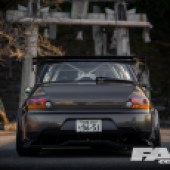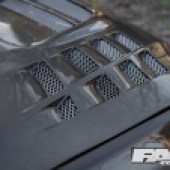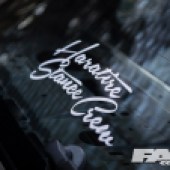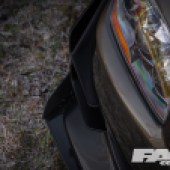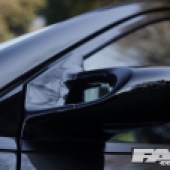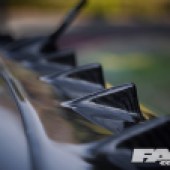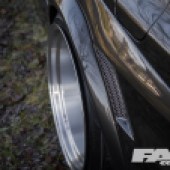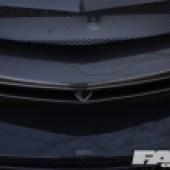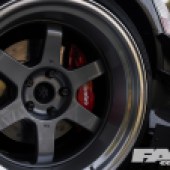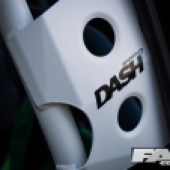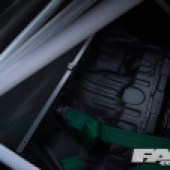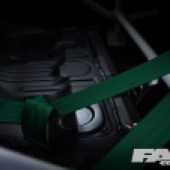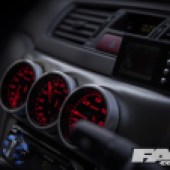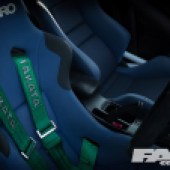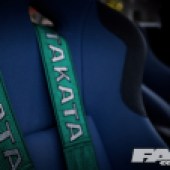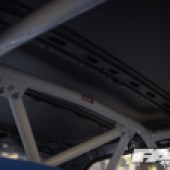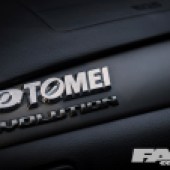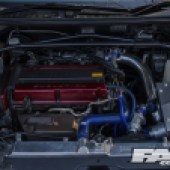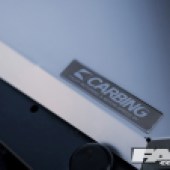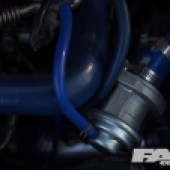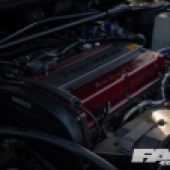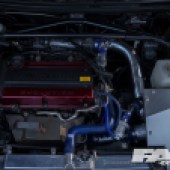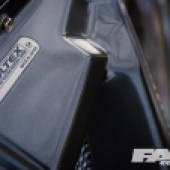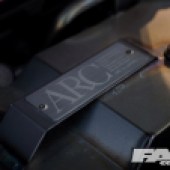We take a look at the most JDM Mitsubishi Evo VII in Japan…

Japanese Domestic Market, or JDM, is a powerful term for enthusiasts. Back in the heyday when Japan was churning out iconic cars such as Honda Integra Type R, Toyota Supra, Nissan Skyline GT-R, Mazda RX-7 and so on, they inadvertently created a following of enthusiasts who would not only lust after JDM cars more than their North American and European counterparts, but who would even want to buy aftermarket parts from Japan as well.

It’s common knowledge that the Japanese attention to detail is on God’s tier and if you were planning on going down the rabbit hole of modifying your car, there’s no better reassurance of quality than Japanese-made parts. Somewhere down the line however, having JDM parts became something more. It became a status symbol. Like that neighbour who owns a purebred German Shepherd and won’t stop talking about how special it is because of its ‘pureness’, enthusiasts with pure JDM bits love to brag about all the parts they own that came from Japan.

In some ways, I can understand this slightly pretentious attitude. The headaches of turning your car into a ‘JDM’ car are quite immense. Ordering parts from halfway across the world is not only difficult, but very expensive. Thanks to their superb quality, the cost of buying the parts can be big, but then throw the cost of shipping into the mix and you really have yourself a wallet shattering item. Then there’s the wait. Of course if you’re ordering something small that can easily fit on an aeroplane, the wait isn’t too bad. However, if you’re ordering something a little larger or heavier, such as a JDM-spec H22a DOHC VTEC engine, your wait could take months – which will feel like an eternity.

Then there’s that fear the expensive parts you just ordered aren’t authentic, as you bought them on eBay or from a different seller than the manufacturer to make up some costs on shipping. Long story short. Unless you have some connections inside of Japan, it can be hassle to transform your import to a ‘proper JDM’ car.

That brings up a question though. If you live in Japan, is it possible for you to have a JDM build? Does not having to deal with a lot of the struggles enthusiasts outside of Japan have to, make it less special? As you already live in Japan, is it still called JDM, or is it just modifying a car (and do you say, ‘I want to eat some Japanese food’ – or just ‘I want to eat some food’?).

Truth be told, ever since I moved to Japan, I haven’t heard people saying they wanted a JDM build. Everyone is customising and modifying their cars to their own taste and just happen to be lucky enough to live in Japan for easy access to parts. I assumed everyone thought like this and the notion of a JDM-build only existed in the context outside of Japan. Then I met Takeru-San and his stunning CT9A Evolution VII.

For enthusiasts looking to build a ‘JDM’ Evolution VII, Takeru-San’s CT9A is the very essence of what they would want to build. Almost the entire Voltex catalogue in aero parts, massive front-mount ARC intercooler, the biggest dished TE37 V Mark II Rays I have ever seen, Recaro racing seats, most of the Tomei’s parts catalogue, and so on. If you took this car and put it anywhere else in the world, it would be considered one-helluva JDM. Takeru-San knew this. He actually built his time attack CT9A on the premise of making it as JDM as possible.

His quest started a little over 10 years ago, when Takeru-San bought this CT9A, which also happens to be his very first car. Infatuated with World Rally Championship (WRC) races at a young age, when it became time to buying a car, Evolutions, Imprezas, Celicas and Corollas were all on his radar. After much deliberation, he limited his choice to Evolutions or Imprezas. The Imprezas ranked high on his list, but also came with a premium price tag compared to the Evolutions. At the time, the Evolution X was brand new and Takeru- San could see the potential. However with the cost, the Evolution VII just made more financial sense.

With the car sorted out, it was time to let the modification bug go wild. Again, thanks to the inspiration of WRC, Takeru-San was looking to build something more of a track or Time Attack car than a hard parker. Getting more power out of the 2.0L 4G63T I4 was top priority. Basic upgrades such as larger, 650cc Arms injectors, Tomei 255L fuel pump and HKS EVC controller are great. But he wanted a lot more power. The old turbo was ripped out and a brand new Tomei M7960 turbo took its place. A conservative 400hp to all four wheels is the fruits of his hard labour. “I could easily get more power out of the engine,” he says. “However I don’t want to stress it too much as I haven’t upgraded the engine’s internals yet. The current power is more than enough for me right now.”

With the power sorted, it was time to address the handling. With the ability to put power to all four tyres, all-wheel drive machines such as the Evolution are great for digging out of corners – especially with the addition of an active centre differential and improved LSD. The Ohlins PCV suspension, 16k fronts, 14k rear provide the extra stiffness necessary for optimal handling around the circuit. For daily use however, it’s highly recommended you avoid anything resembling a pothole less you find yourself being bounced out of your seat – which happened a few times as we scouted for a photoshoot location. But hey, you gotta break eggs to make omelettes, right?

Takeru-San’s EVO VII has the entire Voltex parts catalogue thrown at it – the Voltex circuit version to be precise. Front bumper, which includes the front splitter, double canards, GT Hood, rear bumper and diffuser, and overfenders are included in the circuit version of the kit. For extra downforce, GT Type 5 V-Mount wing was added to the rear. Eagle-eyed readers may have noticed that the overfenders don’t seem like regular overfenders and that’s because they are indeed double overfenders.

The same day I arrived to Fukuoka to meet Takeru-San, his CT9A was undergoing a slight modification in the wheel department. Takeru-San was looking for something a little different than his previous set of Work Meister M1s. Trying to keep up with the JDM trend 18-inch Rays TE37 were an obvious choice – however the specs he went with are anything but. 12J with an offset of -20 have to be the biggest TE37 I have ever seen. Now, Takeru-San has the hard-parking styling to backup the track performance.

The interior is all business too, with the rear seats and most of the interior being stripped out to save weight, and a 16-point DASH roll cage added. Key’s Steering wheel help communicate the road conditions to Takeru-San, while an array of Defi gauges output important information such as water and oil temperatures, and boost. Recaro Spg-n seats keep both driver and passenger firmly in place.

As it stands, Takeru-San is quite happy the way his CT9A has turned out. It has both the functionality to rip around a circuit, and at the same time look so damn cool hard parked.

Of course, the modification bug is never satisfied and he informs me that the next thing on the list is to clean up the engine bay and address some of the internal limitations of the 4G63T, so he can safely increase the boost. Until then, I’ll leave you with a simple question. Did Takeru-San nail the JDM styling?

TECH SPEC: EVO VII
ENGINE
2.0L 4G63T I4T; Tomei Arms 7960 Turbine; Tomei 660cc injector; Tomei 255L fuel pump; HKS Racing plug No. 9; Rallyart plug code; HKS Vpro; HKS EVC 6; Billion fan controller; Okuyama intake kit; Samco turbo hose kit; ARC intercooler; Tomei Extreme exhaust manifold; Tomei Extreme outlet component; Tomei Extreme Tititanium muffler; Tomei blow-off valve.
EXTERIOR
Voltex circuit version; Voltex V-Mount type 5; Voltex overfender front/rear; Voltex double overfender front/rear.
CHASSIS
TE37 MARK 2 12x18in with wheels (-20 offset); Nitto NT 05 265/35×18 tyres; Ohlins suspension PCV front 16kg, rear 14kg; MEGANRacing suspension arm.
INTERIOR
Okuyama DASH 16-point rollcage; Okuyama lower arm bar; Key!s Racing steering wheel and shifter; Recaro Spg-n seats; Defi turbo, water, oil gauges.
Words & Photography Ron Celestine

